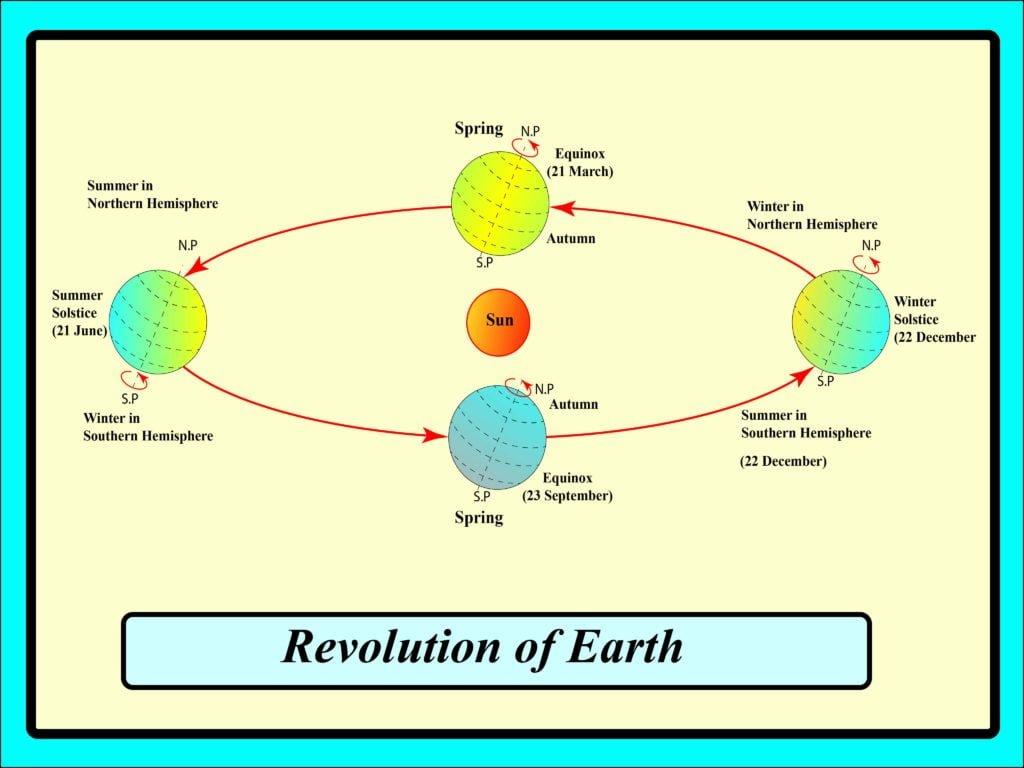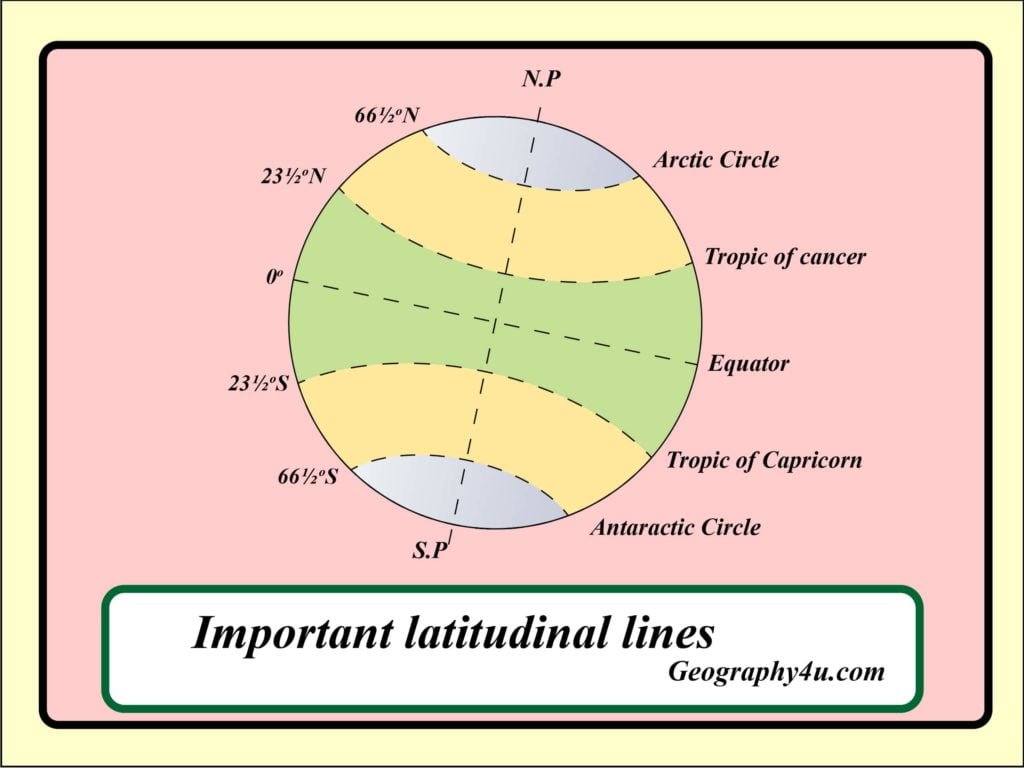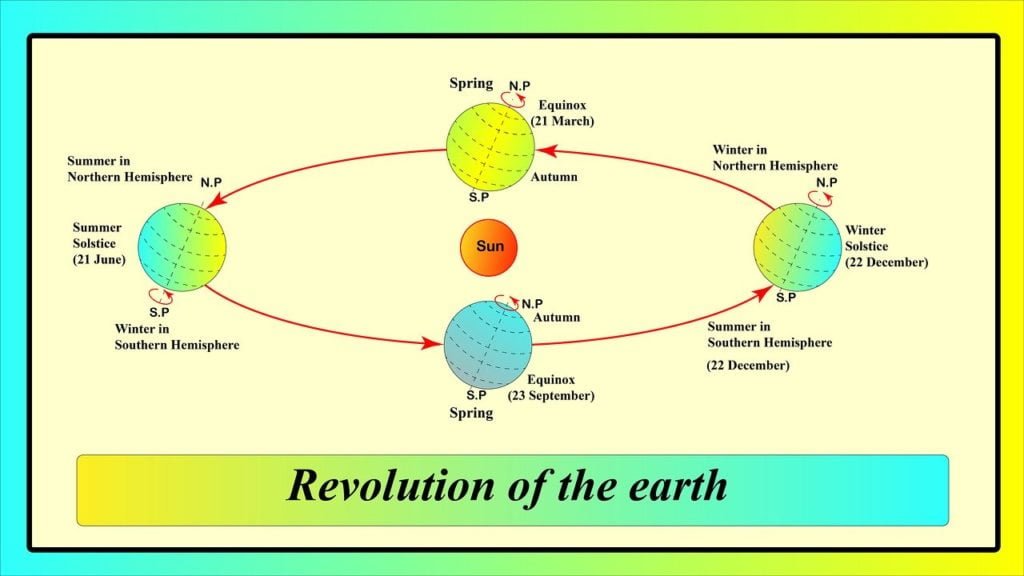As we know, revolution and rotation are the two types of motions of the earth. These motions cause various phenomena depending upon the position of the earth with respect to the sun. In this article, I will discuss the important facts about the Earth’s motion- rotation of the earth and revolution of the earth.
Table of Contents
What is the rotation of the earth?
The rotation (Paribraman) is the movement of the earth around its tilted axis. The axis of the earth is an imaginary line around which the earth rotates. Also, the earth’s axis is tilted at an angle of 23½ degrees from the normal and makes an angle of 66½ degrees with its orbital plane.

Questions related to the rotation of the Earth
How much time does it take to complete a rotation of Earth?
On average, the earth takes about twenty-four hours (24 hrs) to complete one rotation around its tilted axis. Also, the period of rotation is known as Earth-day.
What causes the days and nights?
Due to the spherical or geoid shape of the earth, only half of its portion get light from the sun at a time. The circle that divides the days from the night on the earth is called the circle of illumination. So, the rotation of Earth causes the days and nights.
What is the time taken to complete one rotation?
The earth takes 23 hours and 56 minutes to complete one rotation around its tilted axis. However, we take 24 hours and ignore the remaining seconds for the sake of convenience.
What is the earth’s direction of rotation?
The direction of rotation of the earth is from west to east direction.
Revolution of the earth or Prikaraman
The movement of the earth around the sun in a closed or elliptical orbit is called the revolution of the earth or Parikaraman. Approximately the earth takes 365 days and 6 hours to complete one revolution around the sun. However, we consider a year having 365 days only and ignore the remaining 6 hours for the sake of convenience.
Why there is a leap year after 4 Years?
As I have discussed above, the 6 hours at the end of every year is saved and added to make a complete day (24 hours) over a span of 4 years. Thus, there are 366 days in a leap year and the extra day is added in the month of February. That’s why February has 29 days in a leap year. For instance, 2020 is a leap year and the next leap year will be 2024.
How the revolution of the earth causes the change in the seasons?

Usually, there are four different seasons of the earth. For instance, Summer, Winter, Spring and Autumn. The change in the seasons is the outcome of the change in the position of the earth around the sun. Moreover, this change in the position is the result of the revolution of Earth. Therefore, the revolution of the earth around the sun causes the change in seasons.
Summer solstice
On 21st June, the rays of the sun fall directly on the Tropic of Cancer. Also, the northern hemisphere is slightly tilted towards the sun during this period. Consequently, the areas in these regions receive more heat. On the other hand, the areas near the poles receive less heat due to slanting rays of the sun. As a large portion of the northern hemisphere is getting more sunlight, the regions north of the equator experience the summer. Also, the days are longer than the nights in the Northern hemisphere. This position of the earth is called the summer solstice.

Winter Solstice
On 22nd December, the rays of the sunlight fall directly on the Tropic of Capricorn. Also, the southern hemisphere is slightly tilted towards the sun. Consequently, this region receives more heat. Therefore, it is summer in the region of the southern hemisphere. Moreover, the days are longer than the nights in these regions. This position of Earth is called the winter solstice. That’s why Christmas in Australia is celebrated in the winter.
Equinox
It is the position of the earth when the direct rays of the sun fall on the equator. The situation of the equinox can be experienced twice a year i.e. 21st of March and the 23rd of September. At this position of the earth, neither of the poles is tilted towards the sun. Moreover, the whole earth experiences equal days and nights.
On 23rd September, the northern and southern hemisphere experiences the Autumn season and Spring season respectively. However, this condition is reversed on the 21st of March. When the southern hemisphere experiences the Autumn season and the Spring season in the Northern hemisphere.

- How did the theory of plate tectonics evolve over time?
- 7 Criticisms of Continental Drift Theory by Alfred Wegener
- Malthus theory of population: critical analysis & relevance
- Major Types of Clouds formation and their Characteristics
- Get Detailed Bpsc syllabus 2022-23
- Complete bpsc geography optional syllabus 2022
- Major mineral resources of India with maps
- Von thunen theory of agricultural location
- Weber’s theory of industrial location
- Mountain passes: Important passes in India
- Basic information about India 2023 updated
- Agriculture of Bihar: problems & solutions


Thank you for the opportunity in sharing your ideas about the topic on rotation and revolution. It’s a great help probably on my daily class in science 7. Thank you so much and Godspeed.